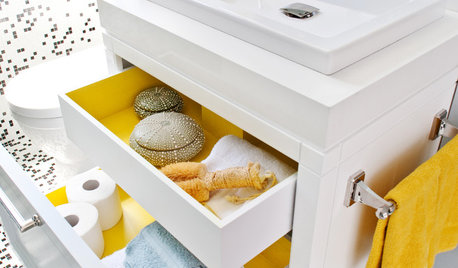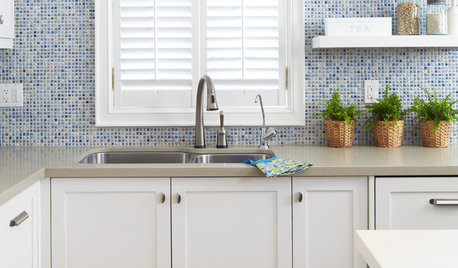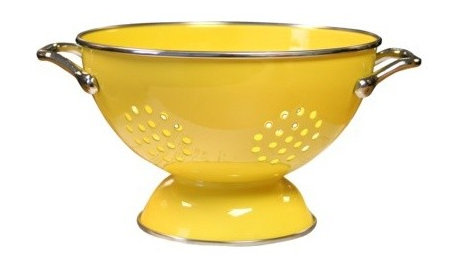Hello! Thank you in advance for any advice offered and for those who give advice here. I have a project for well water that I am having trouble coming up with the "best" solution. I have never done anything like this before, and have learned enough to be dangerous, but am looking for the best route to take. I apologize in advance for the length of this post.
Here are the positive numbers from the water report:
Mineral mg/L/ppm
Calcium 7.2
Magnesium 4
Iron 0.377
Manganese 0.46
Silica 44.5
Sodium 13
Alkalinity(CaC03) 54
Hardness 34
pH 5.9(pH Units)
Total Dissolved Solids 100
Turbidity 3.2 (NTU)
Acetone 0.02
There does not seem to be any iron related bacteria, however, we have semi-heavy mud sediment directly after heavy rains, and kind of a suspended clay sediment at most times (I think). We have rocky but clay soils, and there is some sticky clay buildup in pipes pre-sediment-filter after long periods of use. We currently have a DGD2501 25-to-1 micron nominal pentek 20'' cartridge filter that removes anything visible for sparkling water, however, the pH problems and other "contaminates" still exist in soluble form. So we now have clean water, but still a little irony, with manganese and some hardness, not to mention the little-bit-low pH. There may or may not be H2S at the well, it might just be an iron smell when the water runs or sits in the tank - but we switched from a bladder tank to a hydropneumatic years ago and it corrected most of the smell (although it still smells pretty metallic? or sulfuric? when it runs, but maybe this is worse when it has had time in the pressure tank (possibly to precipitate?).
Water that has been sitting in the hydroneumatic tank is slightly yellow (I'm assuming this is some of the precipitated iron due to air in the tank, possibly even at my lower pH), so is water that you add chlorine bleach to in the house (this is more like tea); water fresh from the well is more of a clear or clean blue tinted color, but even more so the best water is past the cartridge filter in the house. All clear, clean, sparkling blue tint in a white bucket and no visible fines in the house after the cartridge filter.
We are planning on this - upgrading to a hydroneumatic pressure/contact multipurpose tank with air injector (venturi). Using this to add oxygen to the water, then increasing the pH, removing the iron and manganese as best possible, and then most likely softening the water. It has been recommended to me to use a 2.0cu ft tank that has about 1.5cu ft. of Calcite/Corosex (in maybe an 80/20 mix), and .5cu ft. of filter sand to boost pH levels into the 8's and remove the iron and manganese in one step (or two steps - oxygenation in the first contact/pressure tank, then in the second a pH increase into the 8's and mechanical filtration). I would top this off only with corosex occasionally when needed. I have read that manganese may need to be in the 9's to preciptate out fully "on its own?," and that collodial iron can be created past a pH of 8.5, but this system likely wouldn't get it that high anyway, at least not during periods of use (but might do that when it was sitting?). Either way, it seems like there may still be at least some manganous manganese in the water past this tank during periods of use. After this, I was planning on following with a cartridge filter (25-to-1 micron) for any precipitant or sediment missed, then maybe another 1 micron cartridge, and then a water softener. I figured this softener would remove any extra -ous forms of iron and manganese that was left.
Is this the best plan, or, would I be better off with say, 1.5cu ft. or 2.0cu ft. of an acid neutralizer tank, then possibly a Filox tank, then a softener? Also, would I need fine mesh resin in the softener (might make a difference if I have the Filox tank in there or not), and, what is the pressure drop on fine mesh compared to standard? Of course, that setup doesn't include a backwashing sediment filter, and I did have .5 cu ft of filter sand in the mixed media AN tank with the first option to catch some or all of the precipitated iron and manganese (and some sediment).
Which, there is still the issue of my clay sediment in the water. I would like to protect the valves and media as much as possible, but, there aren't that many visible fines to separate out as in a centrifugal sand separator, and I'm afraid a spin down filter screen might get stopped up by the sticky clay and might not do that much good toward removing the clay sediment anyway. So I'm also not sure if those are a good idea or not.
So, I guess I'm wondering if I need to go one of these routes:
1. Mixed media AN/sand filter (pH to 8's)--> Cartridge Sediment Filter(s) -->Fine? mesh softener
2. Mixed media AN/sand filter (pH to 7's?, 8's?)--> Filox --> Cartridge Sediment Filter(s) -->Fine mesh softener or Standard mesh softener
3. AN filter (pH to 7's? 8's?)--> Backwashing Sediment Filter --> Filox --> Cartridge Sediment Filter(s) --> Softener
4. Backwashing Sediment Filter -->AN Filter(pH to 7's? 8's?)-->Filox-->Cartridge(s)-->Softener
5. AN Filter(pH to 7's?)-->Filox-->Cartridge(s)-->Softener
Or something I haven't even mentioned, or a mixture or variation of some of those. It seems to really be a question of about three or four things (making about 9 choices on what the order is at just three times three right?). And if I don't have sand sediment filtration in there for iron precipitation and/or sediment (but do have Filox), maybe the goal should be a pH in the 7's instead of 8's to let the Filox do more of the work (since there wouldn't be a mechanical filter to catch the iron and manganese precipitation)? Or maybe 8's would be good if there was a sediment filter and then the Filox. Or maybe it doesn't matter much - I just don't know.
Or maybe I should stay with the higher pH in the 8's for manganese filtration and then use Birm if I'm looking to add a dedicated iron and manganese filter, since it has some better? sediment filtration properties than Filox
I'm also trying to contact a Filox manufacturer (Watts, maybe?) to find out about the optimum operating pH range of Filox - if it in fact performs better around the midrange of 7 in its 5.0-9.0 range, or if higher can be better for manganese reduction but the midrange goal is about not wanting it to trap any more precipitated iron and manganese than it needs to and to keep it focused on trapping the -ous forms (which might make the higher ends of the range okay if you had mechanical filtration ahead of it, but then that would have its own problems or need to be maintained well because of the high backwash requirements that Filox needs)
If I end up with a dedicated iron filter in there, the reason I was looking at Filox specifically over Pyrolox and MangOx (formerly Catalox) because it seemed to have a slightly lower weight and backwash requirement of all of the heavier manganese dioxide based medias.
Anyway, thank you all very, very, very much for your help, and for reading this!!!
-B
















jcalhoun
bdiggsOriginal Author
Related Discussions
Need recommendations on whole house water treatment
Q
Well water treatment with high Iron
Q
Well water treatment system
Q
Recommended Water Treatment
Q
User
jcalhoun